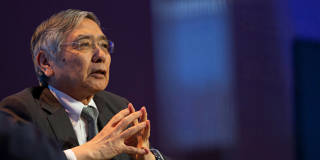OnPoint Subscriber Exclusive
Longer Reads provide in-depth analysis of the ideas and forces shaping politics, economics, international affairs, and more.

The Bank of Japan’s Remarkable Decade
With the departure this month of the Bank of Japan’s longest-serving governor, Haruhiko Kuroda, the BOJ has entered a new era. Thanks to Kuroda’s successes in defeating deflation and restoring economic activity, there is now light at the end of the tunnel for Japan’s chronically underperforming economy.
TOKYO – On April 8, Haruhiko Kurodastepped down after a decade as governor of the Bank of Japan – the longest governorship in the BOJ’s 142-year history. When he was appointed, the Japanese economy’s main problem was deflation: inflation had been negative, on average, for 15 years, implying that the economy was chronically performing below its potential. Moreover, many exporters were suffering from a soaring yen, which hit ¥75 per $1 in October 2011, compared to ¥124 per $1 in June 2007, just before the global financial crisis.